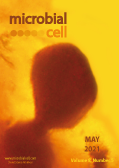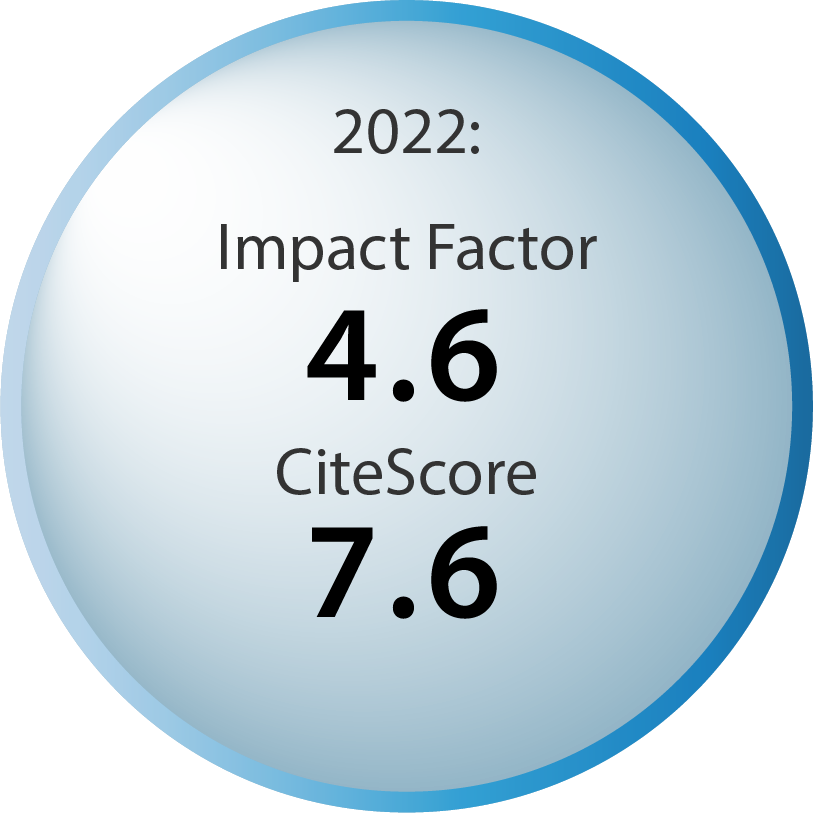Table of contents
Volume 8, Issue 5, pp. 87 - 110, May 2021
Cover: The cover image depicts an oocyst of the malaria parasite Plasmodium dominicana Poinar, attached to the gut of the mosquito Culex malariger Poinar in Dominican amber, preserved from 15-20 millions of years ago (image by George O. Poinar, Oregon State University, USA; the image was modified by MIC). The cover is published under the Creative Commons Attribution (CC BY) license.
Enlarge issue cover
Means of intracellular communication: touching, kissing, fusing
Anne Spang
Viewpoint |
page 87-90 | 10.15698/mic2021.05.747 | Full text | PDF |
Abstract
Eukaryotic cells are complicated factories that need ensure productivity and functionality on the cellular level as well as being able to communicate with their environment. In order to do so cells developed intracellular communication systems. For a long time, research focused mainly on the secretory/biosynthetic and endocytic routes for communication, leaving the communication with other organelles apart. In the last decade, this view has changed dramatically and a more holistic view of intracellular communication is emerging. We are still at the tip of the iceberg, but a common theme of touching, kissing, fusing is emerging as general principles of communication.
Dry biocleaning of artwork: an innovative methodology for Cultural Heritage recovery?
Giancarlo Ranalli, Pilar Bosch-Roig, Simone Crudele, Laura Rampazzi, Cristina Corti and Elisabetta Zanardini
Research Articles |
page 91-105 | 10.15698/mic2021.05.748 | Full text | PDF |
Abstract
An innovative methodology is proposed, based on applied biotechnology to the recovery of altered stonework: the “dry biocleaning“, which envisages the use of dehydrated microbial cells without the use of free water or gel-based matrices. This methodology can be particularly useful for the recovery of highly-ornamented stoneworks, which cannot be treated using the conventional cleaning techniques. The experimental plan included initial laboratory tests on Carrara marble samples, inoculated with dehydrated Saccharomyces cerevisiae yeast cells, followed by on-site tests performed on “Quattro Fontane” (The Four Fountains), a travertine monumental complex in Rome (Italy), on altered highly ornamented areas of about 1,000 cm2. The mechanism is based on the spontaneous re-hydration process due to the environmental humidity and on the metabolic fermentative activity of the yeast cells. Evaluation by physical-chemical analyses, after 18 hours of the biocleaning, confirmed a better removal of salts and pollutants, compared to both nebulization treatment and control tests (without cells). The new proposed on-site dry biocleaning technique, adopting viable yeast cells, represents a promising method that can be further investigated and optimized for recovering specific altered Cultural Heritage stoneworks.
Host-bacteria metabolic crosstalk drives S. aureus biofilm
Kira L. Tomlinson and Sebastián A. Riquelme
Microreviews |
page 106-107 | 10.15698/mic2021.05.749 | Full text | PDF |
Abstract
Staphylococcus aureus is a prominent pathogen that can cause intractable lung infections in humans. S. aureus persists in the airway despite inflammation and immune cell recruitment by adapting to host-derived antimicrobial factors. A key component of the immune response to infection are host metabolites that regulate inflammation and bacterial survival. In our recent paper (Tomlinson et al., Nat Commun, doi: 10.1038/s41467-021-21718-y), we demonstrated that S. aureus induces the production of the immunoreglatory metabolite itaconate in airway immune cells by stimulating mitochondrial oxidant stress. Itaconate in turn inhibited S. aureus glycolysis and growth, and promoted carbon flux through bacterial metabolic pathways that support biofilm production. These itaconate-induced metabolic changes were recapitulated in a longitudinal series of clinical isolates from a patient with chronic staphylococcal lung infections, demonstrating a role for host immunometabolism in driving bacterial persistence during long-term staphylococcal lung infections.
Too much of a good thing: Overproduction of virulence factors impairs cryptococcal pathogenicity
Julia C. V. Reuwsaat, Tamara L. Doering, and Livia Kmetzsch
Microreviews |
page 108-110 | 10.15698/mic2021.05.750 | Full text | PDF |
Abstract
The regulation of virulence factor production and deployment is crucial for the establishment of microbial infection and subsequent pathogenesis. If these processes are not properly coordinated, the infecting pathogen is less likely to both survive the immune response and cause damage to the host. One key virulence factor of the opportunistic fungal pathogen Cryptococcus neoformans, which kills almost 200,000 people each year worldwide, is a polysaccharide capsule that surrounds the cell wall; this structure helps the fungal cells resist engulfment and elimination by host phagocytes. Another important virulence trait is the development of a giant (Titan) cell morphotype that increases fungal resistance to phagocytosis, oxidative stress, and antifungal treatment. We recently identified the transcription factor Pdr802 as essential for C. neoformans adaptation to and survival under host conditions both in vitro and in vivo (Reuwsaat et al., mBio, doi: 10.1128/mBio.03457-20). Cryptococci lacking Pdr802 display enlarged capsules and enhanced Titan cell production, along with dramatically reduced virulence in a mouse model of infection. These results demonstrate that more is not necessarily better when it comes to virulence factors. Instead, precise regulation of these traits, to avoid both under- and overexpression, is critical for the success of this pathogen as it faces the challenges imposed by the host environment.










